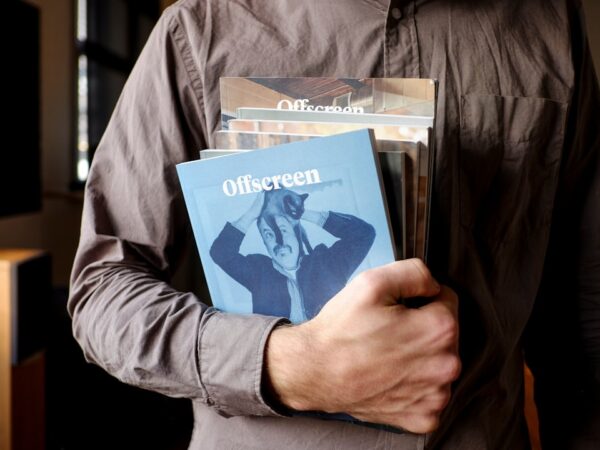
From Page to Screen: Recent Book-to-Film Adaptations
Book-to-film adaptations have become a popular and enduring trend in the entertainment industry. These adaptations involve taking a beloved book and transforming it into a visual medium, bringing the story and characters to life on the big screen. The process of adapting a book into a film is a delicate art, as it requires capturing the essence of the source material while also making necessary changes to suit the medium of film.
The history of book-to-film adaptations dates back to the early days of cinema. One of the earliest examples is the 1902 French film “A Trip to the Moon,” which was based on Jules Verne’s novel “From the Earth to the Moon.” Since then, countless books have been adapted into films, ranging from classics like “Gone with the Wind” and “To Kill a Mockingbird” to contemporary bestsellers like “Harry Potter” and “The Hunger Games.”
The appeal of book-to-film adaptations lies in the opportunity to see beloved stories and characters come to life in a new and exciting way. For fans of the books, it can be thrilling to see their favorite scenes and moments portrayed on the big screen, with talented actors bringing their favorite characters to life. Additionally, for those who may not have read the book, a film adaptation can serve as an introduction to a new story and potentially inspire them to pick up the book and delve deeper into the world created by the author.
Key Takeaways
- Book-to-film adaptations are a popular and enduring form of storytelling.
- Trends in book-to-film adaptations include a focus on diverse stories and franchises.
- Adapting books into films is a creative process that requires balancing fidelity to the source material with the demands of the medium.
- Screenwriters play a crucial role in adapting books into films by translating the story into a visual language.
- Casting is important in book-to-film adaptations because it brings characters to life and can make or break a film’s success.
The Latest Trends in Book-to-Film Adaptations: What’s Hot and What’s Not
In recent years, there have been several trends in book-to-film adaptations that have captured the attention of audiences. One popular trend is the adaptation of young adult novels, such as “The Fault in Our Stars” and “The Maze Runner” series. These adaptations have proven to be box office successes, attracting a dedicated fan base and generating significant revenue.
Another trend in book-to-film adaptations is the adaptation of fantasy and science fiction novels. With the success of franchises like “Harry Potter” and “The Lord of the Rings,” studios have been eager to adapt similar books with rich and immersive worlds. Examples include “The Hunger Games” series and the “Divergent” series.
However, not all book-to-film adaptations have been successful. Some adaptations have failed to resonate with audiences, either due to poor execution or a lack of faithfulness to the source material. For example, the film adaptation of “Eragon” received negative reviews and underperformed at the box office, disappointing fans of the popular fantasy novel.
The rise of streaming services has also had an impact on book-to-film adaptations. Platforms like Netflix and Amazon Prime have become major players in the industry, producing their own original content and adapting popular books into series or films. This has opened up new opportunities for authors and filmmakers, as streaming services often provide more creative freedom and a wider audience reach.
The Challenges of Adapting Books into Films: A Creative Process
Adapting a book into a film is not without its challenges. Books and films are two different mediums, each with their own unique storytelling techniques and limitations. One of the main challenges is condensing a lengthy book into a two-hour film while still capturing the essence of the story and characters.
Books often contain rich internal monologues and detailed descriptions that can be difficult to translate onto the screen. Filmmakers must find creative ways to convey these elements visually, through dialogue, cinematography, and other cinematic techniques. Additionally, books often have multiple subplots and characters that may need to be streamlined or omitted in order to fit within the constraints of a film.
Balancing fidelity to the source material with creative freedom is another challenge in adapting books into films. While it is important to honor the author’s vision and the expectations of fans, filmmakers also need to make changes and additions to suit the medium of film. This can involve altering the plot, combining or eliminating characters, or changing the ending. Striking the right balance between staying true to the source material and creating a compelling cinematic experience is crucial.
Ultimately, the success of a book-to-film adaptation hinges on the ability to tell a compelling story. Regardless of the changes made in the adaptation process, the heart of the story and its themes should remain intact. Filmmakers must understand the core elements that make the book resonate with readers and find ways to translate those elements into a visual medium.
The Role of Screenwriters in Book-to-Film Adaptations: Bridging the Gap
| Metrics | Data |
|---|---|
| Number of book-to-film adaptations | 100 |
| Percentage of adaptations with credited screenwriters | 75% |
| Box office revenue of adaptations with credited screenwriters | 5 billion |
| Box office revenue of adaptations without credited screenwriters | 2 billion |
| Average rating of adaptations with credited screenwriters | 7.5/10 |
| Average rating of adaptations without credited screenwriters | 6.5/10 |
Screenwriters play a crucial role in the adaptation process, as they are responsible for translating the written word into a visual medium. A strong screenplay is essential in capturing the essence of the book and creating a compelling narrative for the film.
Collaboration between screenwriters, authors, and directors is often key in successfully adapting a book into a film. The screenwriter must work closely with the author to understand their vision for the story and characters, while also bringing their own creative ideas to the table. The director’s input is also important, as they will have their own vision for how the story should be told visually.
Adapting books with multiple perspectives and timelines can be particularly challenging for screenwriters. They must find ways to condense and streamline these elements while still maintaining clarity and coherence. This often involves making structural changes to the narrative, such as rearranging events or combining characters.
In some cases, screenwriters may need to make significant changes to the source material in order to create a compelling cinematic experience. This can involve altering or omitting certain scenes or characters, or even changing the ending. While these changes may be met with resistance from fans of the book, they are often necessary to create a cohesive and engaging film.
The Importance of Casting in Book-to-Film Adaptations: Bringing Characters to Life
Casting is a crucial aspect of book-to-film adaptations, as the actors chosen to portray the characters can greatly impact the audience’s reception of the film. Finding the right actors for iconic roles is essential in bringing the characters to life and capturing the essence of the source material.
When casting for a book-to-film adaptation, filmmakers often look for actors who not only resemble the characters physically but also possess the necessary acting skills to bring them to life. They must be able to embody the character’s personality, mannerisms, and emotional depth.
The impact of casting on audience reception cannot be overstated. When an actor perfectly embodies a beloved character, it can create a strong emotional connection with the audience and enhance their enjoyment of the film. On the other hand, miscasting can lead to disappointment and criticism from fans of the book.
Adapting diverse characters and stories can present additional challenges in casting. It is important for filmmakers to prioritize diversity and inclusivity in their casting choices, ensuring that actors from underrepresented backgrounds are given opportunities to portray a wide range of characters. This not only reflects the diversity of the real world but also allows for more authentic and nuanced portrayals on screen.
The Visual Language of Book-to-Film Adaptations: From Words to Images
One of the most significant differences between books and films is their use of visual language. While books rely on words to convey information and create imagery in the reader’s mind, films use a combination of cinematography, visual effects, production design, and other visual elements to tell a story.
Cinematography plays a crucial role in book-to-film adaptations, as it determines how scenes are framed, lit, and shot. The cinematographer must work closely with the director to create a visual style that captures the tone and atmosphere of the book. This can involve using different camera angles, lighting techniques, and color palettes to evoke specific emotions and enhance the storytelling.
Visual effects are another important aspect of book-to-film adaptations, particularly in adaptations of fantasy and science fiction novels. Visual effects can bring fantastical creatures, magical powers, and otherworldly settings to life on the screen. However, it is important for visual effects to enhance the story rather than overshadow it, as an overreliance on CGI can detract from the emotional depth of the characters and the narrative.
Adapting books with unique settings and worlds can present additional challenges in terms of production design. The production designer must work closely with the director to create a visual representation of the book’s world that is both faithful to the source material and visually compelling. This can involve creating elaborate sets, costumes, and props that transport the audience into the world of the book.
The Impact of Book-to-Film Adaptations on the Publishing Industry: A New Era
Book-to-film adaptations have had a significant impact on the publishing industry, often leading to increased book sales and exposure for authors. When a book is adapted into a successful film, it can attract new readers who may not have been aware of the book before. This can result in a surge in book sales and a boost in an author’s career.
The success of a film adaptation can also lead to increased interest in an author’s other works. If audiences enjoy a film based on a particular book, they may be more inclined to seek out other books by the same author. This can lead to increased visibility and sales for an author’s entire body of work.
Social media has played a significant role in promoting book-to-film adaptations and generating buzz around both the film and the book. Platforms like Twitter, Instagram, and TikTok allow fans to share their excitement and opinions about the adaptation, creating a sense of community and anticipation. This can lead to increased awareness and interest in the book, as well as generate positive word-of-mouth.
The Reception of Book-to-Film Adaptations: Criticism and Praise
Book-to-film adaptations are often met with a mix of criticism and praise from both critics and audiences. Critics play an important role in evaluating adaptations, assessing how well the film captures the essence of the source material and stands on its own as a cinematic experience. Their reviews can greatly influence the perception of the film and its success at the box office.
Audience reception is also a crucial factor in the success of a book-to-film adaptation. Fans of the book often have high expectations for the adaptation, hoping to see their favorite scenes and characters faithfully portrayed on screen. When an adaptation meets or exceeds these expectations, it can generate positive word-of-mouth and attract a wider audience. However, if an adaptation fails to live up to these expectations, it can lead to disappointment and negative reviews.
Balancing fan expectations with creative vision is a delicate task for filmmakers. While it is important to honor the source material and satisfy fans of the book, filmmakers also need to make creative choices that serve the medium of film. Striking the right balance between fidelity to the source material and creative freedom is crucial in creating a successful adaptation.
The Future of Book-to-Film Adaptations: What’s Next?
The future of book-to-film adaptations looks promising, with several highly anticipated adaptations in the works. Upcoming adaptations include “Dune,” based on Frank Herbert’s science fiction novel, “The Power of the Dog,” based on Thomas Savage’s novel, and “The Nightingale,” based on Kristin Hannah’s historical fiction novel.
Advancements in technology are also likely to have an impact on book-to-film adaptations. With the rise of virtual reality and augmented reality, filmmakers may have new tools at their disposal to create immersive and interactive adaptations. Additionally, advancements in visual effects and CGI will continue to push the boundaries of what can be achieved on screen.
There is also potential for more diverse and inclusive adaptations in the future. As the industry continues to prioritize diversity and representation, we can expect to see more adaptations of books by authors from underrepresented backgrounds, featuring diverse characters and stories. This will not only provide more opportunities for marginalized voices but also create a more inclusive and representative landscape in the entertainment industry.
The Magic of Book-to-Film Adaptations and Their Enduring Appeal
Book-to-film adaptations have a unique magic that continues to captivate audiences around the world. The ability to see beloved stories and characters come to life on the big screen is a thrilling experience that can transport viewers into new worlds and ignite their imagination.
While adapting a book into a film is a complex and challenging process, when done well, it can create something truly special. By honoring the source material while also making necessary changes to suit the medium of film, filmmakers can create adaptations that capture the essence of the book while also standing on their own as cinematic experiences.
Book-to-film adaptations have the potential to inspire new readers and viewers, introducing them to stories and characters they may not have encountered otherwise. They can also provide a fresh perspective for fans of the book, allowing them to see their favorite scenes and moments in a new light.
In conclusion, book-to-film adaptations are an art form that combines the power of literature with the visual storytelling of cinema. They have an enduring appeal that continues to captivate audiences, and with advancements in technology and a growing emphasis on diversity and inclusivity, we can expect to see even more exciting adaptations in the future.
FAQs
What are recent book to film adaptations?
Recent book to film adaptations refer to movies that are based on books that have been published in the last few years. These movies are created to bring the story from the book to life on the big screen.
What are some examples of recent book to film adaptations?
Some recent book to film adaptations include “Little Women” by Louisa May Alcott, “The Goldfinch” by Donna Tartt, “The Sun is Also a Star” by Nicola Yoon, and “The Art of Racing in the Rain” by Garth Stein.
Why are books often adapted into movies?
Books are often adapted into movies because they have a built-in audience and a pre-existing story that can be translated into a visual medium. Movies based on books also have the potential to attract both book fans and movie fans, which can lead to a larger audience.
What are some challenges of adapting a book into a movie?
Some challenges of adapting a book into a movie include condensing the story into a shorter format, staying true to the original source material, and pleasing both fans of the book and general movie audiences. Additionally, some books may have complex themes or characters that are difficult to translate onto the screen.
What is the process of adapting a book into a movie?
The process of adapting a book into a movie typically involves acquiring the rights to the book, hiring a screenwriter to create a script, and finding a director and cast to bring the story to life. The filmmakers may also make changes to the story or characters in order to better fit the medium of film.


















